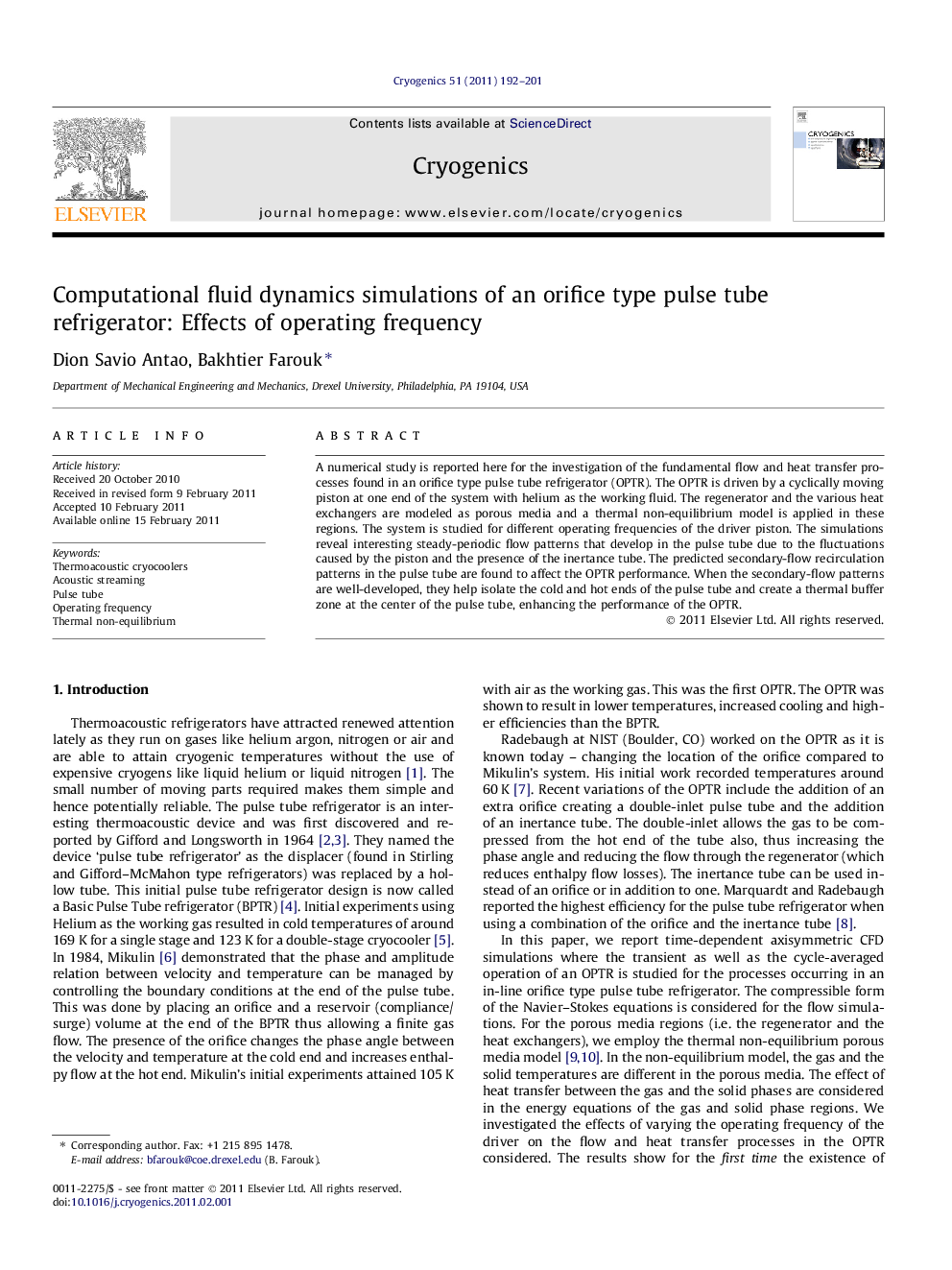| Article ID | Journal | Published Year | Pages | File Type |
|---|---|---|---|---|
| 1507989 | Cryogenics | 2011 | 10 Pages |
A numerical study is reported here for the investigation of the fundamental flow and heat transfer processes found in an orifice type pulse tube refrigerator (OPTR). The OPTR is driven by a cyclically moving piston at one end of the system with helium as the working fluid. The regenerator and the various heat exchangers are modeled as porous media and a thermal non-equilibrium model is applied in these regions. The system is studied for different operating frequencies of the driver piston. The simulations reveal interesting steady-periodic flow patterns that develop in the pulse tube due to the fluctuations caused by the piston and the presence of the inertance tube. The predicted secondary-flow recirculation patterns in the pulse tube are found to affect the OPTR performance. When the secondary-flow patterns are well-developed, they help isolate the cold and hot ends of the pulse tube and create a thermal buffer zone at the center of the pulse tube, enhancing the performance of the OPTR.
Research highlights► An OPTR system is simulated using computational fluid dynamics. ► Navier–Stokes equations simulate the gas flow and temperature characteristics. ► A thermal non-equilibrium model is used in the porous media. ► An optimum operating frequency of 34 Hz is found for the system. ► Two streaming cells are observed near the cold and hot ends of the pulse tube.
